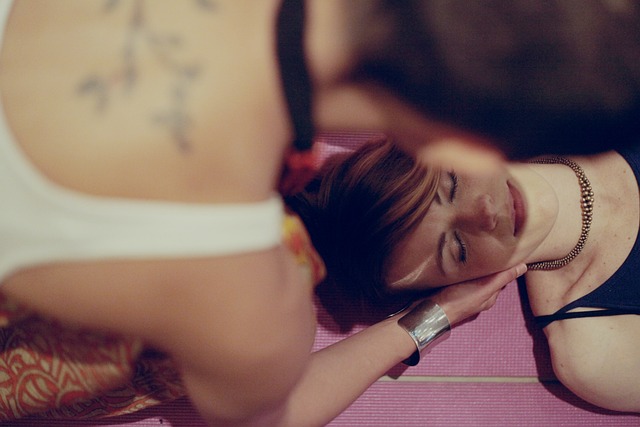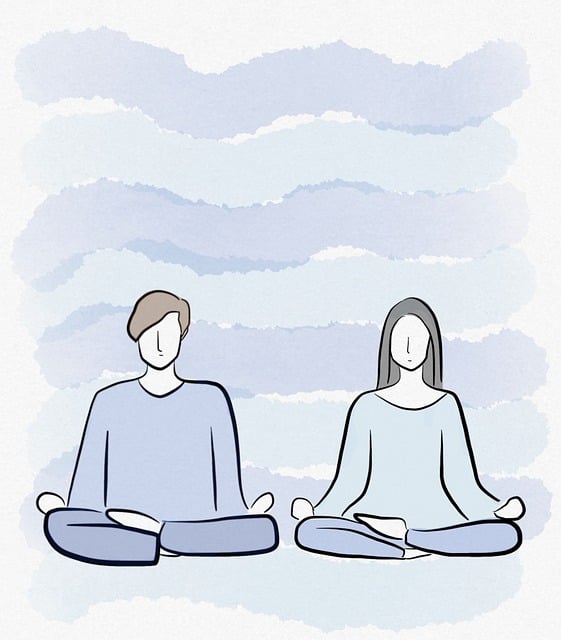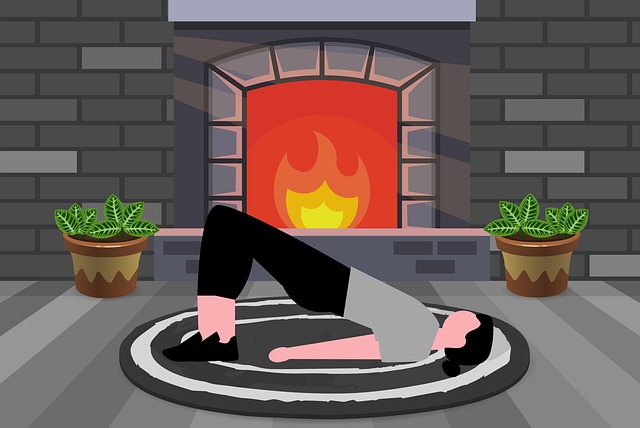Anxiety left unchecked severely impacts emotional wellness through chronic fear and physical symptoms like increased heart rate and muscle tension. Breathing exercises, a powerful and simple tool, activate the parasympathetic nervous system, promoting relaxation and counteracting stress responses. Integrating these exercises into daily routines enhances resilience, reduces anxiety symptoms, fosters emotional balance, and boosts overall emotional wellness. Effective emotional wellness strategies include breathing techniques that prioritize mindfulness for comprehensive anxiety management.
Anxiety can significantly impact our emotional wellness, affecting both our mental and physical well-being. In this article, we explore one of the most accessible yet powerful tools for managing anxiety: breathing exercises. We’ll delve into how these techniques calm the mind and body, and discuss various methods you can use to ease anxiety and promote a sense of tranquility. Discover practical emotional wellness strategies to incorporate into your daily routine for long-term calmness.
- Understanding Anxiety and Its Impact on Emotional Wellness
- The Power of Breath: A Tool for Calming the Mind and Body
- Exploring Different Breathing Techniques for Anxiety Relief
- Incorporating Breathing Exercises into Your Daily Routine for Long-Term Calmness
Understanding Anxiety and Its Impact on Emotional Wellness

Anxiety, a natural response to stress or perceived threats, can significantly impact our emotional wellness if left unaddressed. Beyond fleeting feelings of worry or unease, chronic anxiety can manifest as a pervasive sense of fear and distress, affecting daily functioning and overall quality of life. It’s more than just feeling nervous; it’s a complex emotional state that may lead to physical symptoms like increased heart rate, muscle tension, and difficulty sleeping. Understanding these effects is crucial in recognizing the importance of effective emotional wellness strategies.
Breathing exercises emerge as a powerful tool in combating anxiety, offering a simple yet profound method to regain control and promote calmness. By focusing on mindful breathing, individuals can activate their parasympathetic nervous system, facilitating relaxation and counteracting the body’s stress response. Integrating these techniques into daily routines empowers individuals to navigate anxious moments with greater resilience, ultimately enhancing their ability to manage and reduce anxiety symptoms while fostering a sense of emotional balance and wellness.
The Power of Breath: A Tool for Calming the Mind and Body

The power of breath is an often-underestimated tool for calming the mind and body, serving as a cornerstone in many emotional wellness strategies. When we breathe deeply and intentionally, we activate our parasympathetic nervous system, which helps to slow heart rate and reduce stress hormones. This simple yet profound action allows us to shift from a state of anxiety or distress to one of tranquility and focus. By paying attention to our breath, we can literally rewire our brains to respond more calmly to stressful situations.
Breathing exercises are accessible anywhere, anytime, making them an excellent resource for managing daily stress and anxiety. They offer a moment of pause, allowing us to reconnect with our inner selves and cultivate a sense of peace. Incorporating these practices into your routine can be a transformative step towards enhancing emotional wellness, demonstrating that sometimes the most powerful tools for healing and balance are found in the simplest of actions—like the rise and fall of our breath.
Exploring Different Breathing Techniques for Anxiety Relief

Breathing exercises are powerful tools in the arsenal of emotional wellness strategies aimed at calming anxiety and promoting a sense of tranquility. Different techniques cater to various preferences and needs, making it accessible for everyone to find their fit. One popular method is diaphragmatic breathing, also known as belly breathing, which involves slow, deep inhalations that expand the stomach rather than the chest. This technique activates the relaxation response, reducing heart rate and blood pressure, and inducing a state of calm.
Another effective approach is alternate nostril breathing, a yogic practice that balances energy levels in the body. By alternating between inhaling through one nostril and exhaling through the other, this method can help regulate breath flow, calming the mind and fostering mental clarity. Additionally, counting breaths during inhalation and exhalation adds a layer of mindfulness, further grounding individuals in the present moment and distracting from anxious thoughts. Exploring these diverse breathing techniques allows for personalized emotional wellness strategies to manage anxiety effectively.
Incorporating Breathing Exercises into Your Daily Routine for Long-Term Calmness

Incorporating breathing exercises into your daily routine can be a powerful tool for managing anxiety and cultivating long-term calmness. These simple yet effective practices offer a quick and accessible way to regulate emotions and promote mental clarity, making them essential emotional wellness strategies. Dedicate just a few minutes each day to focus on your breath—whether it’s during a morning routine, before bed, or in moments of heightened stress.
Over time, consistent practice can help retrain your mind and body to respond more calmly to anxious thoughts and feelings. By making breathing exercises a habit, you empower yourself to navigate stressful situations with resilience and composure. This proactive approach contributes to an overall sense of emotional balance and well-being, ensuring that moments of calm become deeply ingrained in your daily life.
Breathing exercises offer a simple yet powerful tool to navigate anxiety and enhance emotional wellness strategies. By understanding how anxiety impacts our minds and bodies, we can harness the potential of our breath to achieve calmness. The various breathing techniques outlined in this article provide effective ways to manage stress, with long-term benefits for overall well-being. Incorporating these practices into daily routines allows us to cultivate resilience against anxiety, ensuring a more balanced and serene life.
